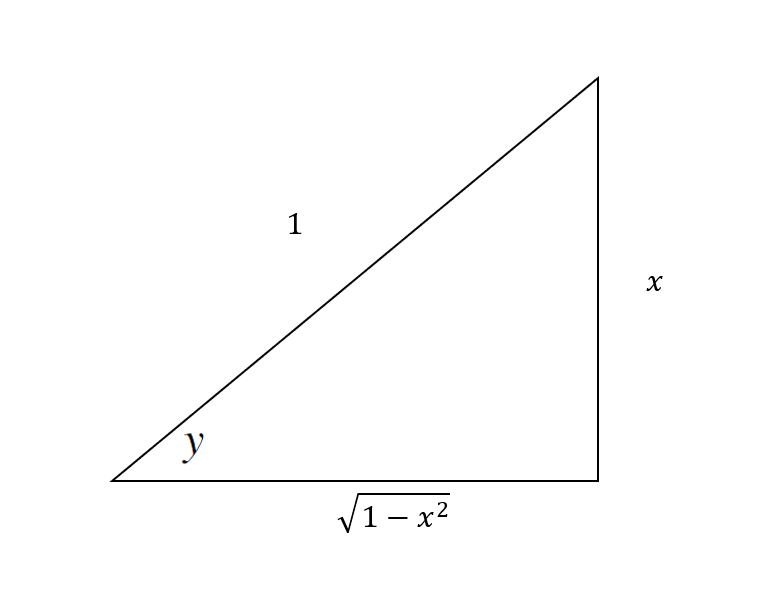Question #a254f
2 Answers
Feb 16, 2018
It should be
Explanation:
Now use implicit differentiation to get
and use trigonmetry to get
# = 1/sqrt(1-x^2)#
Feb 17, 2018
A more visual yet same as the answer below
Explanation:
Create a triangle where

The missing side can be found using Pythagorean's Theorem
Differentiate both sides implicitly (W.R.T.
Divide
Rewrite in terms of
Since
Then
So


